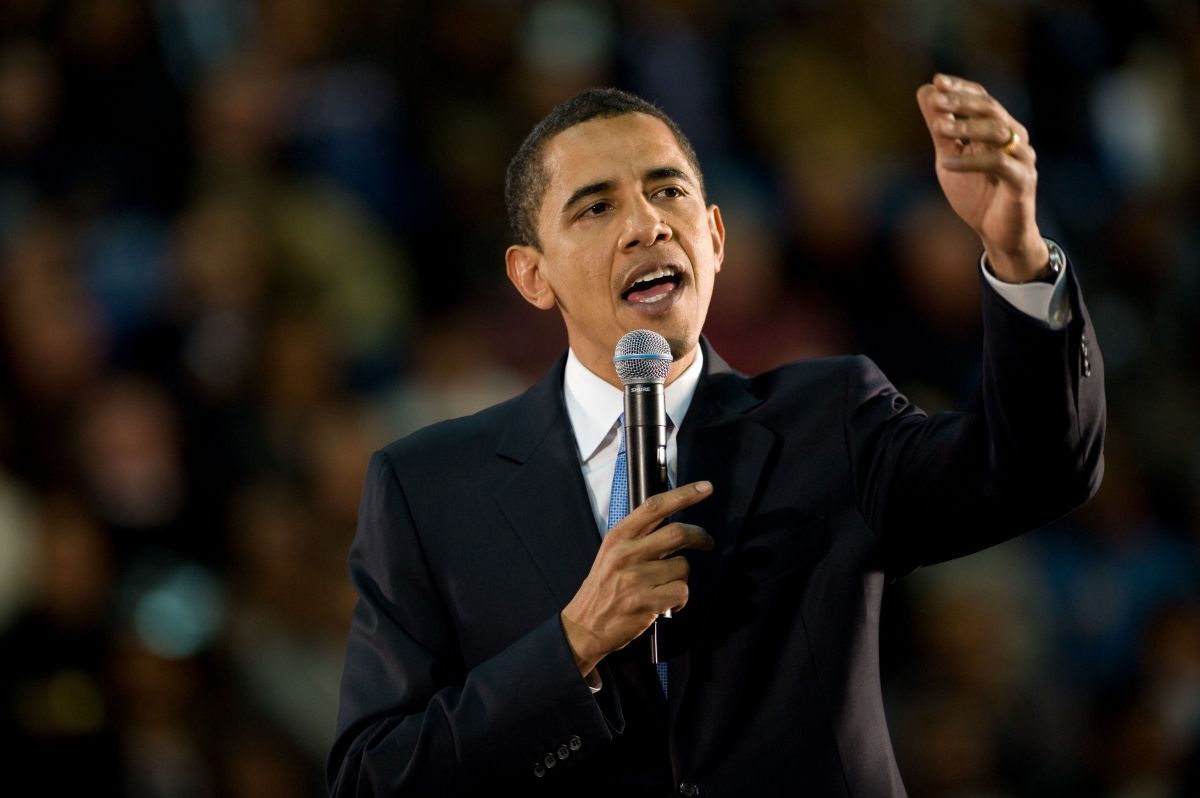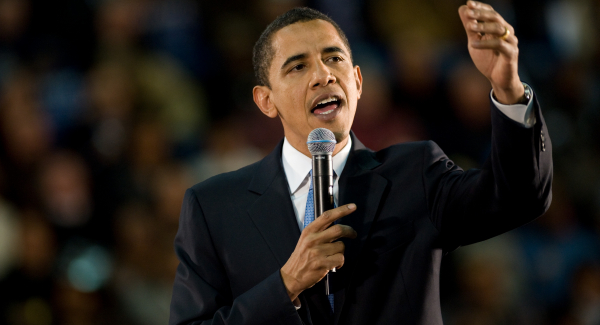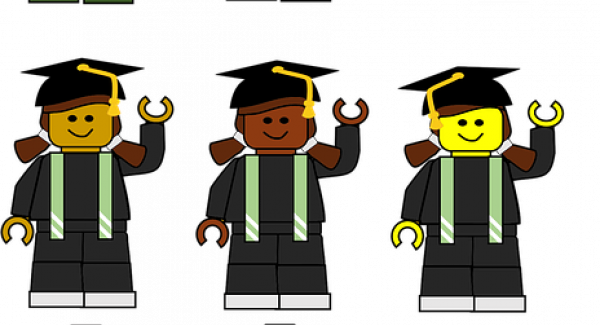If your citizenship comes with the responsibility - and privilege - of voting, then every few years you face an interesting challenge. Who will you vote for? Whether you choose to support an incumbent, a celebrated war hero, an experienced government official, or a new face on the political scene, psychologists are incredibly curious about the process by which you come to that decision. There is reason to believe that, coming from a thoughtful and prepared voter, your ballot will reflect an objective assessment of candidate qualifications. You may, for example, use the time before an election to analyze debates, weigh social policies, and scrutinize performance records. With a wealth of political information at the tip of your fingers, only careful, deliberative thinking will contribute to your final decision…right?
Recent research in political psychology tells us that conscious deliberation is only part of the story when it comes to the voter-decision process. Information about candidates is further gathered using no mental effort, through processes operating completely outside of our awareness. Visual cues, for example, such as physical appearance, are instrumental in shaping our impressions of political candidates. Consider the case of Richard Nixon, a United States’ presidential hopeful back in September of 1960. Coming off of a hospital visit and sporting a five-o’clock shadow, Nixon participated in the first-ever televised presidential debate against John F. Kennedy, whose recent return from sunny California left him well-rested and tan. There is reason to believe that Nixon’s arguments were superior: radio listeners thought he won the debate. The estimated 70 million TV viewers, however, overwhelmingly preferred Kennedy. Visual information, i.e. Kennedy’s clean-cut confidence versus Nixon’s haggard appearance, is presumed to have influenced the TV viewers, ultimately shaping their global impressions of both candidates (Kraus, 1988).
Fast forward almost fifty years and researchers are just beginning to understand how physical appearance, particularly facial appearance, factors into voter choice. Nixon’s and Kennedy’s facial expression may certainly have evoked emotional reactions from television viewers during that critical debate. Accordingly, research suggests that feelings, like warmth or happiness, in response to a candidate’s facial gestures can influence voters’ attitudes and subsequent decisions (Sullivan & Masters, 1988). Of particular interest to social-cognitive researchers who study person-perception is how the mind translates facial appearance into beliefs about a candidate’s suitability for office. We now know that in the instant we see a person’s face, an array of fast and implicit cognitive processes take place. In that split second, we unconsciously construct ideas about a person’s personality (Bar, Neta & Linz, 2006). We may think a person is kind, strict, or honest, based only on his appearance. As you might imagine, because we make these personality inferences so easily, they can have important implications for a political candidate seeking election. Indeed, early research had found that a candidate’s photograph can communicate a clear image of his “congressional demeanor,” and fitness for office, affecting his voter appeal (Rosenberg, Bohan, McCafferty, & Harris, 1986). But what is it exactly about a politician’s face that influences his popularity? And which trait inferences matter when it comes to our voting decisions?

As most politicians know, people generally favor familiar faces over unfamiliar faces. What they may not be aware of is people also tend to prefer faces that are similar to their own. Such an idea is firmly grounded in evolutionary theory. Our faces tend to be similar to our family members’ faces, and we also generally share genetic material with them. The evolutionary perspective argues that we are fundamentally wired to protect and spread our genes, so it makes sense that we might be biologically-biased to prefer similar faces. Is this preference sufficiently ingrained so that we might actually prefer candidates who resemble us?
Bailenson, Iyengar, Yee, and Collins (in press) used a creative method to test this idea. Building on their previous work (Bailenson, Garland, Iyengar, & Yee, 2006), they examined the influence of facial similarity on voting behavior by actuallymanipulating the degree of facial similarity between participants and candidates. How? By digitally morphing images of participants’ faces with photographs of current candidates! Essentially, they screened out participants with glasses and facial hair, and used only high-quality photographs. They then used a computer program to morph, or blend, participants’ faces into the faces of real-life United States’ politicians, such as Hillary Clinton. Participants were unaware of the image modifications.
The researchers conducted three experiments in which they showed participants candidate photos that had been morphed with themselves (self-morph) and/or with a random other participant (other-morph). In some cases, these images were of widely-known politicians, like John Edwards or Rudy Giuliani, while other times they were of unfamiliar candidates. Participants rated each candidate on a set of ten positive personality traits (i.e. moral, intelligent, and friendly), reported their party affiliation (Democrat or Republican), and indicated the strength of that affiliation. In the final experiment, participants also saw a brief description of the candidates’ positions on issues like the Iraq War along with their picture.
The findings revealed a fascinating effect of facial similarity on voting decisions. With only a week until election day, people actually preferred candidates whose faces were manipulated to appear like their own. A more nuanced analysis of this effect showed that only judgments about unfamiliar candidates, not well-known candidates, were affected by the similarity manipulation. Overall, participants generally preferred familiar faces, but among unfamiliar candidates, the one who looked most like the participant got his or her vote. Applying this research, we can imagine, for example, that were the French president Nicolas Sarkozy to run for re-election in 2012 against a relatively unknown candidate, people would use the facial similarity cue in their impression of the opponent, but not in their judgment of the well-known Sarkozy. While typically only recognizable political figures compete for national offices, many lesser-known people fight for and win powerful government jobs, such as president of regional council (France), minister-president (Germany), or governor (United States). The implications of this research are particularly charged for local or state-wide races like these, in which voters may be unacquainted with candidates’ policy positions, and may turn to visual information as a cue to guide their decision.
Bailenson and colleagues’ (in press) second experiment provided some evidence that independents and people who only weakly-identify with their political parties were susceptible to the influence of visual cues even in judging famous politicians. In other words, while die-hard Republicans favored Guiliani regardless of the similarity morph, less-partisan people relied on facial similarity to decide their preference. Interestingly, strongly-identified Democrats or Republicans used their party as a cue for voting only when candidates were described as sharing their perspectives on issues, like the Iraq War or the outsourcing of American jobs. This places policy information at the forefront of a voter’s decision. At the same time, partisan voting was limited to well-known candidates; decisions made about unfamiliar candidates still depended, at least in part, upon facial similarity.
This research makes a significant contribution to our understanding of how undecided voters come to make their decisions. Not only does it identify facial similarity as influencing voter judgment, but it highlights the often-overlooked role of visual cues in shaping our preferences. Bailenson and colleagues’ (in press) work also gives us a basis for theorizing about campaign strategies for small races, where candidates are not well-know, or primary elections, where candidates’ standings on issues tend to be quite similar. Advertisements promoting an average-looking candidate, who would presumably resemble many people, could give him an advantage over a rival who has more distinctive features. Research has shown that average-looking people also tend to be perceived as more attractive (Langlois & Roggman, 1990) and that attractive candidates tend to be preferred (Budesheim & DePaola, 1994). While Bailenson and his team (in press) controlled for attractiveness, the two forces of similarity and attractiveness together could give an unknown candidate an edge.
Candidates may also win undecided voters simply by looking “presidential” or “gubernatorial.” Take for example Sérgio Cabral Filho, current Governor of Rio de Jeneiro, Brazil; were you to look at his photo, you would see a face that suggests competence, leadership, and strength, qualities we seek in a governor. From his picture, you might automatically assume certain characteristics of Sérgio The Person, and, hence, Sérgio The Governor, based only on his appearance. These personality inferences, a form of stereotyping, may unwittingly affect your voting decision, especially if you are not familiar with Governor Cabral Filho and do not know his political, social, or economic policies.
Ballew and Todorov (2007) decided to figure out the relation between governors’ electability and “looking competent.” Their previous research had established that people value competence in their elected officials above all other traits (Todorov, Mandisodza, Goren, & Hall, 2005). This earlier work also revealed that competence judgments were surprisingly good at predicting senate race election outcomes. Turning to governors’ races, Ballew and Todorov (2007) first verified that we do indeed make personality judgments from quick glances at people’s faces, supporting previous research (Willis & Todorov, 2006). They then demonstrated that rapid competence judgments, based only on pictures of candidates’ faces, could predict gubernatorial election results. In other words, participants’ quick competence ratings, made after seeing candidates’ pictures for only 100 milliseconds, identified the winner at a rate significantly better than chance. These participants did not know the candidates, nor did they have access to information about their policies or track-records. All they saw was his or her face. Incredibly, these rapid inferences of competence were also positively associated with the proportion of actual votes received by the candidates; in other words, the more competence attributed to a candidate from a quick glance at his photo, the higher proportion of votes he tended to receive in the actual election.
The intrigue and appeal of these findings are further enhanced by the researchers’ discovery that judgment speed mattered. They found that immediate, first impressions of competence, made after seeing an image for only 100 milliseconds, weresuperior to deliberative judgments in anticipating the winner of an election (Ballew & Todorov, 2007). This finding seems counterintuitive: how could gut feelings outperform reflective thinking? At the same time, it fits well with one research study focused not on candidate preferences, but on strawberry jam. Wilson and Schooler (1991) asked participants to taste and rate the quality of different jams, and then tested the “accuracy” of these ratings by comparing them with evaluations offered by trained tasting experts. Results showed that when participants were instructed to reflect on why they liked or disliked the jams, they produced ratings that did not corresponded with the experts’ ratings as well as those who simply rated the jams without reflection.
What is it about judging unfamiliar candidates and unfamiliar jams that champions intuition over careful reflection? In both cases, our preferences are formed outside of our awareness. In attempting to justify a first impression that perhaps came to us through nonverbal channels, we consciously construct plausible explanations. For example, if asked to analyze why we dislike a strawberry jam, we think and generate rational explanations: because of its thickness, tartness, or sweetness. As we think about these new reasons, they affect how we feel about the jam, ultimately changing our attitude (Wilson & Schooler, 1991). When it comes to candidates’ faces, forming reasons for our competence judgments shifts our initial impressions without adding real information, making them less reliable predictors of election outcomes.
It is alluring to think that a competent-looking face alone can win an election, but money, political backing, and competent behavior are still critical to a candidate’s campaign success. At the same time, it is possible that political parties choose to back competent-looking people and organizations might preferentially donate money to competent-looking candidates. What we do know is that the effect of a candidate’s nonverbal information is often overlooked, and some voters rely on it more than others.
Are you well-versed in politics, or is your political knowledge rather superficial? Many people agree with the latter description. For them, politics is largely remote: the nature of economic and social problems, the difference between political parties, and the policies that candidates propose are abstract and overwhelming. In order to circumvent the challenge of making a reason-based decision and to still vote, citizens turn to information they do understand. Instead of casting their ballot for the best candidate, they cast their ballots for the best person (Bishin, Stevens & Wilson, 2006). This strategy is essentially a cognitive heuristic, allowing for the formation of a candidate preference efficiently and with little real effort. Heuristics are mental short-cuts that come in handy when we are faced with complex decisions. They can be misguiding, but heuristics certainly conserve a person’s time and mental energy. For voters, an incredibly time-intensive task becomes simple when they can base their ballot decisions on persons, not politics. Because character is, for a great part, inferred from appearance, Lau and Redlawsk (2001) may be on to something when they suggest candidate appearance is one of the most important political heuristics, relied upon widely by uninformed voters.
Next time you prepare to head to the polls, know that throughout campaign season you will take in a sea of political information that is too wide and too deep for anyone to process completely, but do not feel overwhelmed. The trick is to obtain sufficient political sophistication so that cognitive heuristics serve you well, rather than lead you astray. For those who have some familiarity with the political environment, heuristics actually lead to higher quality voting decisions (Lau & Redlawsk, 2001). Instead of turning to candidate appearance, sophisticated voters choose organizational endorsements and ideological schemas as cues to guide their voting. These short-cuts are still cognitive heuristics, conserving both time and mental energy, but they capitalize on the knowledge of invested others, making them more reliable indicators of a candidate’s competency and political inclinations. You can easily discover a candidate’s organizational support with a quick internet search: campaign websites often tout their candidate’s endorsements, and interest groups are generally eager to publicize their positions. In addition, you can develop your own political expertise on a set of specific issues, making it easy for you to recall your stance on these points. When your own policy attitudes are readily accessible, you are more likely to translate your beliefs into behavior and vote by issue (Goren, 1997). So, take time to review candidates’ endorsements and challenge yourself to learn where candidates stand on issues you care about, such as education, health care, or global warming. By becoming familiar with the policies behind politicians who seek election, you can form a judgment, and cast a vote that best reflects your vision for the future of your country.
References
Bailenson, J. N., Garland, P., Iyengar, S., & Yee, N. (2006). Transformed facial similarity as a political cue: A preliminary investigation. Political Psychology, 27, 373-386.
Bailenson, J.N., Iyengar, S., Yee, N., & Collins, N. A. (in press). Facial similarity between voters and candidates causes influence.Public Opinion Quarterly.
Ballew, C.C., & Todorov, A. (2007). Predicting political elections from rapid and unreflective face judgments. Proceedings of the National Academy of Sciences of United States of America, 104 17948-17953.
Bar, M., Neta, M., & Linz, H. (2006). Very first impressions. Emotions, 6, 269-278.
Bishin, B.G., Stevens, D., & Wilson, C. (2006). Character Counts? Honesty and fairness in election 2000. Public Opinion Quarterly, 70, 2, 235-248.
Budesheim, T. L., & DePaola, S. J. (1994). Beauty or the beast – the effects of appearance, personality, and issue information on evaluations of political candidates. Personality and Social Psychology Bulletin, 20, 4, 339-348.
Goren, P. (1997). Political expertise and issue voting in presidential elections. Political Research Quarterly, 50, 2, 387-412.
Kraus, S. (1988). Televised Presidential Debates and Public Policy. Hillsdale, NJ: Erlbaum.
Langlois, J. H., & Roggman, L. A. (1990). Attractive faces are only average. Psychological Science, 1, 2, 115-121.
Lau, R. R. & Redlawsk, D. P. (2001). Advantages and disadvantages of cognitive heuristics in political decision making.American Journal of Political Science, 45, 4, 951-971.
Rosenberg, S., Bohan, L., McCafferty, P., & Harris, K. (1986). The image and the vote: The effect of candidate presentation on voter preference. American Journal of Political Science, 30, 108-127.
Sullivan, D. G. & Masters, R. D. (1988). “Happy warriors”: Leaders’ facial displays, viewers’ emotions, and political support.American Journal of Political Science, 32, 345-368.
Todorov, A., Mandisodza, A. N., Goren, A., & Hall, C.C. (2005). Inferences of competence from faces predict election outcomes.Science, 308, 1623-1626.
Willis, J. & Todorov, A. (2006). First impressions: Making up your mind after 100ms exposure to a face. Psychological Science, 17, 592-598.
Wilson, T. D. & Schooler, J. W. (1991). Thinking too much: Introspection can reduce the quality of preferences and decisions.Journal of Personality and Social Psychology, 60, 2, 181-192.




